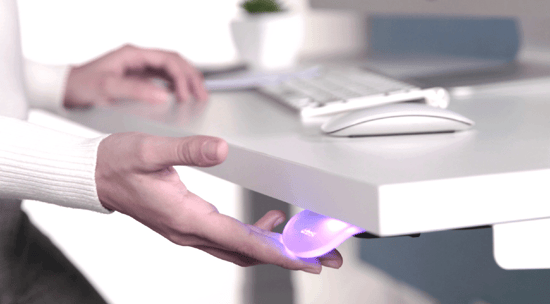The Ultimate Small-Office Design Guide: Pro Tricks (2025 Edition)
Why Small Offices Can Out-Perform Big Ones
When the pandemic reshaped work, thousands of entrepreneurs across the U.S. and Canada carved out 90 to 150 sq. ft. nooks for new ventures. Done right, those “micro HQs” can rival a downtown suite in focus and polish. At Gebesa—North-American logistics plus Mexican craftsmanship since 1995—we’ve helped founders, designers and hybrid teams turn spare bedrooms, converted co-working pods into culture-building command centers. This playbook distills what works.

1. Three Non-Negotiables for Small-Office Success
- Function over filler. Each item should serve more than one purpose to deserve its place.
- Full-time ergonomics. Comfort isn’t a luxury in 50-hour workweeks; it’s throughput.
- Vertical thinking. Floors are finite; walls rise forever. Treat cubic feet as inventory.
2. Smart Zoning in Reduced Spaces
Even in the most compact small-office designs, creating differentiated zones is crucial. This doesn’t require building walls; instead, establish functional areas through furniture and lighting. A main work zone, a storage area, and a break nook can coexist harmoniously in just a few square feet.
Read more here: Optimize Small Office Spaces: Smart Solutions for Maximum Efficiency
The key lies in using modular furniture that adapts to different configurations as your day unfolds. One module can serve as a meeting table in the morning and a filing surface in the afternoon.

Choosing Furniture for Small Offices
The right furniture can make or break a small-office design. Each piece must earn its footprint through versatility and functionality. Multifunctional furniture is your best ally on this mission.
Compact, Functional Desks
The desk is the heart of any small office. Opt for models with integrated storage—side drawers or upper shelves. L-shaped desks maximize corners efficiently, while fold-down models offer flexibility when you need extra floor space.
For extremely tight areas, consider wall-mounted drop-leaf desks that fold away completely after hours, allowing your office to double as another room.
Compact Ergonomic Chairs
Avoid sacrificing comfort for space. A quality ergonomic chair is an investment in your health and productivity. Look for models with high backs, adjustable lumbar support, and the ability to tuck fully under the desk.
Explore our guide to choose the right ergonomic office chair.
Vertical Storage Solutions
In small-office designs, vertical space is pure gold. Walls offer massive storage potential that most people underuse. The trick is to think in three dimensions, not just floor space.

Lighting & Color: Visual Space Amplifiers
Proper lighting can make a small office feel twice its size. Natural light is your best friend, but when it’s limited, strategic artificial lighting works visual miracles.
Maximizing Natural Light
Position your desk near a window, but avoid direct glare on your screen. Sheer curtains let in light while maintaining privacy. Strategically placed mirrors reflect natural light and create the illusion of a larger space—one large mirror opposite the window can visually double your daylight.
Read also: How Color and Lighting Affect Workplace Productivity
Color Schemes that Expand Space
Light colors reflect more light and make rooms feel larger. White, beige, and pastels are safe wall choices. Don’t hesitate to add color accents through furniture and accessories.
A pro trick: use one hue in varying tones to add depth without visual fragmentation. Think off-white walls, pure-white furniture, and light-gray accessories.
Learn more about colors for office here: The 5 Best Color Combinations for Your Office
Technology & Connectivity in Tight Spaces
A modern small office needs well-planned tech infrastructure. Smart cable management, wireless connectivity, and multifunction devices keep order and efficiency intact.
Cable Management & Connectivity
Messy cables can make even the best small office look chaotic. Use adhesive raceways to route cords along walls and desks. Power strips with built-in USB cut down on bulky adapters.
Whenever possible, invest in wireless tech—keyboards, mouse, printers, and audio systems—to eliminate extra cables.
Multifunction Devices
In small-office designs, every device must justify its footprint. A multifunction printer that also scans, copies, and faxes replaces the need for four separate devices. Monitors with built-in USB ports double as connectivity hubs.
Conclusion: Your Small Office, Your Big Opportunity
Successful small-office design isn’t about working within limits—it’s about maximizing creative opportunities. Every square foot can be optimized to create a space that’s not only functional but also inspiring and professional.
Remember, the best small-office designs marry smart planning, multifunctional furniture, and vertical storage solutions. Think strategically about every element you introduce and ensure it serves multiple roles.
No matter how small your office may seem, it can be just as productive and professional as any traditional corporate space. With the right strategies, that compact corner will become the engine of your professional success.
Ready to transform your workspace? Explore our full collection of specialized office furniture and start your makeover today. Gebesa experts are available to guide you in crafting the perfect design for your unique space.





